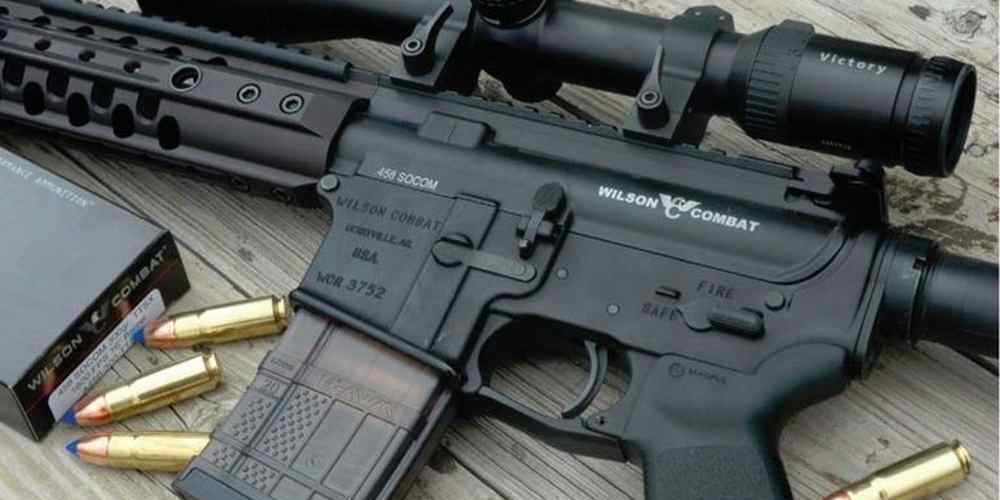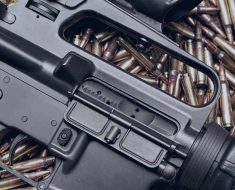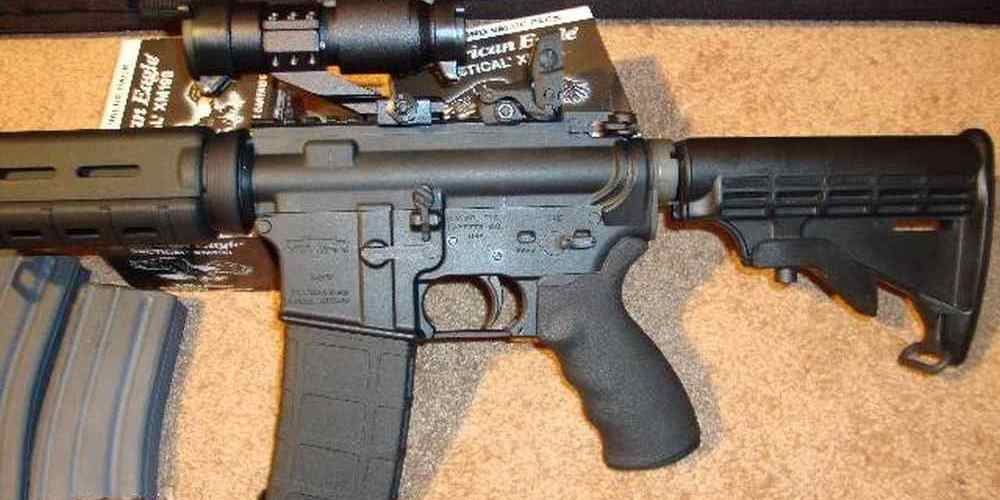“Separating fact from fiction in the world of AR15 ammunition.”
The Myth of Armor-Piercing AR15 Ammunition
When it comes to AR15 ammunition, there are many myths and misconceptions that have been perpetuated over the years. One of the most common myths is that all AR15 ammunition is armor-piercing. This myth likely stems from the fact that the AR15 is a popular rifle among military and law enforcement personnel, who often use armor-piercing ammunition in their weapons. However, the truth is that not all AR15 ammunition is armor-piercing.
Armor-piercing ammunition is specifically designed to penetrate body armor and other types of protective gear. This type of ammunition is typically made with a hardened steel or tungsten core, which allows it to penetrate hard surfaces with ease. While it is true that some AR15 ammunition is armor-piercing, the vast majority of ammunition used in civilian AR15 rifles is not.
In fact, most AR15 ammunition is designed for target shooting, hunting, and self-defense purposes. These types of ammunition are typically made with a lead core and a copper jacket, which helps to improve accuracy and reduce fouling in the barrel. While these types of ammunition may be powerful, they are not designed to penetrate body armor or other types of protective gear.
Another common myth about AR15 ammunition is that it is more powerful than other types of ammunition. While it is true that the AR15 is a powerful rifle, the ammunition it uses is not necessarily more powerful than other types of ammunition. The power of a rifle is determined by a combination of factors, including the caliber of the ammunition, the weight of the bullet, and the velocity at which it is fired.
AR15 rifles are typically chambered in .223 or 5.56mm, which are both relatively small calibers compared to other rifles. While these calibers may not be as powerful as larger calibers like .308 or .30-06, they are still capable of delivering a significant amount of energy downrange. Additionally, the high velocity at which AR15 ammunition is fired can help to increase its effectiveness, especially at longer ranges.
One final myth about AR15 ammunition is that it is more dangerous than other types of ammunition. This myth likely stems from the fact that the AR15 has been involved in several high-profile mass shootings in recent years. However, the truth is that any type of firearm can be dangerous in the wrong hands, regardless of the type of ammunition it uses.
AR15 rifles are popular among gun enthusiasts for their versatility, accuracy, and ease of use. While they may be capable of firing a large number of rounds in a short amount of time, this does not make them inherently more dangerous than other types of firearms. Like any other firearm, AR15 rifles should be used responsibly and stored securely to prevent accidents and misuse.
In conclusion, there are many myths and misconceptions about AR15 ammunition that have been perpetuated over the years. While it is true that some AR15 ammunition is armor-piercing, the vast majority of ammunition used in civilian rifles is not. Additionally, AR15 ammunition is not necessarily more powerful or dangerous than other types of ammunition. Like any other firearm, AR15 rifles should be used responsibly and stored securely to prevent accidents and misuse.

Debunking the Myth of High-Powered AR15 Ammunition
When it comes to firearms, there are many myths and misconceptions that circulate among gun enthusiasts and the general public. One of the most common myths surrounding the AR15 rifle is that it fires high-powered ammunition. In reality, the AR15 typically fires .223 or 5.56mm ammunition, which is considered to be a medium-powered round.
Despite its reputation as a high-powered weapon, the AR15 is actually designed to be a versatile and lightweight rifle that is suitable for a variety of shooting applications. The .223 and 5.56mm rounds that the AR15 fires are commonly used for hunting, target shooting, and self-defense. These rounds are known for their accuracy and relatively low recoil, making them popular choices among shooters of all skill levels.
Another myth surrounding AR15 ammunition is that it is armor-piercing and capable of penetrating body armor. While it is true that some military-grade ammunition can penetrate body armor, the standard .223 and 5.56mm rounds used in the AR15 are not armor-piercing. In fact, these rounds are designed to fragment upon impact, which can actually reduce their penetration capabilities.
It is important to note that the AR15 is a semi-automatic rifle, meaning that it fires one round with each pull of the trigger. This is in contrast to fully automatic weapons, which continue to fire as long as the trigger is held down. The misconception that the AR15 is a fully automatic weapon has led to fears about its firepower and potential for mass shootings. However, the reality is that the AR15 is no more powerful than other semi-automatic rifles on the market.
One of the reasons why the AR15 has gained a reputation for being a high-powered weapon is its military origins. The AR15 was originally developed for military use and has since become a popular choice among civilian shooters. While it is true that the AR15 is capable of firing rapidly and accurately, it is not inherently more powerful than other rifles in its class.
In conclusion, the myths surrounding AR15 ammunition are largely based on misconceptions and misinformation. The reality is that the .223 and 5.56mm rounds used in the AR15 are medium-powered and suitable for a variety of shooting applications. While the AR15 is a versatile and reliable rifle, it is not a high-powered weapon capable of penetrating body armor or causing mass destruction. By debunking these myths, we can better understand the capabilities and limitations of the AR15 and appreciate it for what it truly is: a well-designed and effective firearm.
Exploring the Myth of Cop-Killer AR15 Ammunition
The AR15 is a popular rifle that has been the subject of much controversy and misinformation over the years. One of the most common myths surrounding the AR15 is that it is capable of firing “cop-killer” ammunition. This myth has been perpetuated by the media and anti-gun activists, but the truth is that the AR15 is no more capable of firing armor-piercing ammunition than any other rifle.
Armor-piercing ammunition is designed to penetrate body armor and other types of protective gear. It is typically made with a hardened steel or tungsten core that is capable of piercing through metal and other hard materials. While it is true that some rifles, such as the M16, are capable of firing armor-piercing ammunition, the AR15 is not one of them.
The AR15 is a civilian version of the military M16 rifle and is designed to fire standard .223 or 5.56mm ammunition. These cartridges are not armor-piercing and are not capable of penetrating body armor. In fact, the AR15 is no more powerful than many other rifles on the market and is not inherently more dangerous than any other firearm.
Another common myth about the AR15 is that it is a high-powered rifle that is capable of causing massive damage. While it is true that the AR15 is a powerful rifle, it is no more powerful than many other rifles on the market. The .223 and 5.56mm cartridges that the AR15 fires are actually relatively small and light compared to other rifle cartridges.
The AR15 is a versatile and reliable rifle that is popular among hunters, sport shooters, and gun enthusiasts. It is not a military weapon and is not designed for combat or tactical use. The AR15 is a semi-automatic rifle, which means that it fires one round each time the trigger is pulled. It is not a fully automatic weapon and does not have the capability to fire multiple rounds with a single pull of the trigger.
Despite these facts, the myth of the AR15 as a “cop-killer” weapon persists. This myth is often used by anti-gun activists to demonize the AR15 and other similar rifles. However, the reality is that the AR15 is no more dangerous than any other firearm when used responsibly and in accordance with the law.
In conclusion, the myth of the AR15 as a “cop-killer” weapon is just that – a myth. The AR15 is a popular and versatile rifle that is no more capable of firing armor-piercing ammunition than any other rifle. It is important to separate fact from fiction when it comes to firearms and to educate ourselves about the capabilities and limitations of different types of weapons. The AR15 is a safe and reliable firearm that is enjoyed by millions of responsible gun owners around the world.
The Truth Behind the Myth of Explosive AR15 Ammunition
When it comes to firearms, there are many myths and misconceptions that circulate among gun enthusiasts and the general public. One of the most common myths surrounding the AR15 rifle is that its ammunition is explosive. This misconception has led to fear and misinformation about the capabilities of this popular firearm. In this article, we will debunk this myth and shed light on the truth behind AR15 ammunition.
First and foremost, it is important to understand that AR15 ammunition is not explosive. The ammunition used in an AR15 rifle is typically .223 or 5.56mm caliber, which is a standard rifle cartridge. These cartridges contain a bullet, gunpowder, and a primer, which are all components of a typical round of ammunition. When fired, the gunpowder ignites, propelling the bullet out of the barrel at high speeds. This process does not involve any explosive materials, contrary to popular belief.
Another common misconception about AR15 ammunition is that it is armor-piercing. While it is true that some types of ammunition used in the AR15 rifle can penetrate body armor, this does not mean that the ammunition itself is explosive. Armor-piercing ammunition is designed to penetrate hard materials such as steel or Kevlar, but it does not explode upon impact. It is important to note that armor-piercing ammunition is heavily regulated and not readily available to the general public.
Additionally, some people believe that AR15 ammunition is designed to cause maximum damage to its target. While it is true that the high velocity of AR15 ammunition can cause significant tissue damage upon impact, this does not mean that the ammunition is explosive. The purpose of using a rifle such as the AR15 is to accurately and effectively hit a target at long distances, not to cause unnecessary harm or destruction.
It is also worth mentioning that the AR15 rifle itself has been unfairly demonized in the media and by anti-gun activists. The AR15 is a versatile and reliable firearm that is commonly used for hunting, target shooting, and self-defense. It is not a military-grade weapon, as some may believe, and it is no more dangerous than any other rifle when used responsibly.
In conclusion, the myth that AR15 ammunition is explosive is simply not true. AR15 ammunition is a standard rifle cartridge that does not contain any explosive materials. It is designed to propel a bullet out of the barrel at high speeds, but it does not explode upon impact. It is important to separate fact from fiction when it comes to firearms and to educate oneself on the capabilities and limitations of different types of ammunition. By dispelling these myths, we can have a more informed and productive conversation about gun safety and responsible gun ownership.
Dispelling the Myth of Teflon-Coated AR15 Ammunition
When it comes to AR15 ammunition, there are many myths and misconceptions that have been circulating for years. One of the most common myths is that Teflon-coated ammunition is more lethal and can penetrate body armor. However, this myth is simply not true.
Teflon-coated ammunition, also known as “cop-killer bullets,” gained notoriety in the 1980s when it was falsely believed that the Teflon coating made the bullets more deadly. In reality, Teflon coating is used to reduce friction and improve feeding in semi-automatic firearms. It has no effect on the lethality or penetration power of the bullet.
The myth of Teflon-coated ammunition being able to penetrate body armor likely stems from a misunderstanding of the material’s properties. While Teflon is a slick and durable material, it does not make bullets more powerful or capable of piercing armor. In fact, body armor is specifically designed to stop bullets, regardless of whether they are coated in Teflon or not.
Another common misconception about Teflon-coated ammunition is that it is illegal or banned. This is also false. There are no laws prohibiting the use or sale of Teflon-coated ammunition in the United States. In fact, many manufacturers produce Teflon-coated bullets for use in a variety of firearms, including the AR15.
It is important to dispel these myths about Teflon-coated AR15 ammunition to ensure that gun owners have accurate information about the products they are using. By understanding the true purpose of Teflon coating and its limitations, gun owners can make informed decisions about their ammunition choices.
In conclusion, Teflon-coated AR15 ammunition is not more lethal or capable of penetrating body armor. The Teflon coating is simply a lubricant that helps improve the performance of the bullet in semi-automatic firearms. It is not illegal to use or sell Teflon-coated ammunition, and there is no evidence to suggest that it poses any greater risk than standard ammunition.
By educating ourselves and others about the facts surrounding Teflon-coated AR15 ammunition, we can help dispel these common myths and promote a better understanding of firearms and ammunition. It is important to rely on accurate information and avoid spreading misinformation that can lead to unnecessary fear or confusion. Let’s continue to educate ourselves and others about the truth behind Teflon-coated AR15 ammunition.






